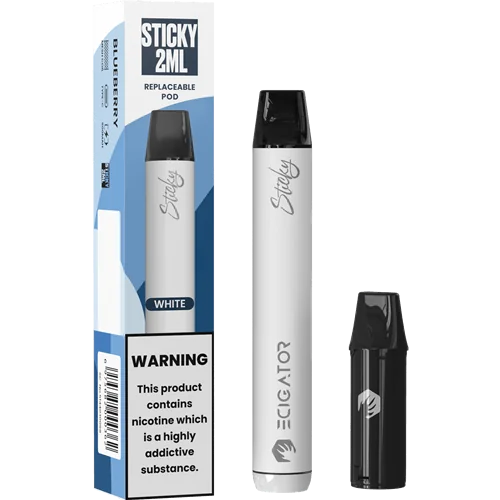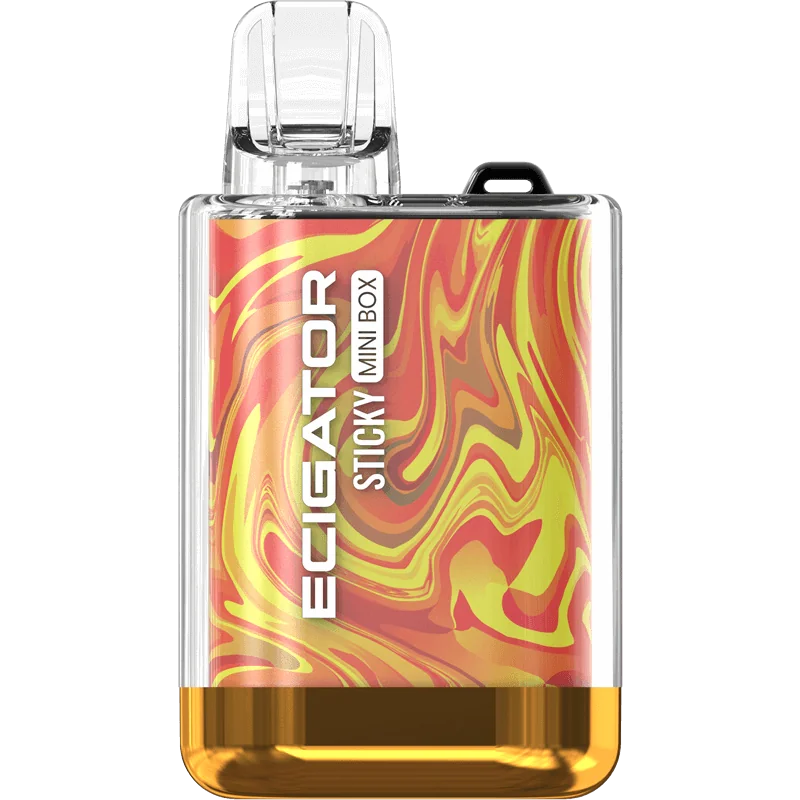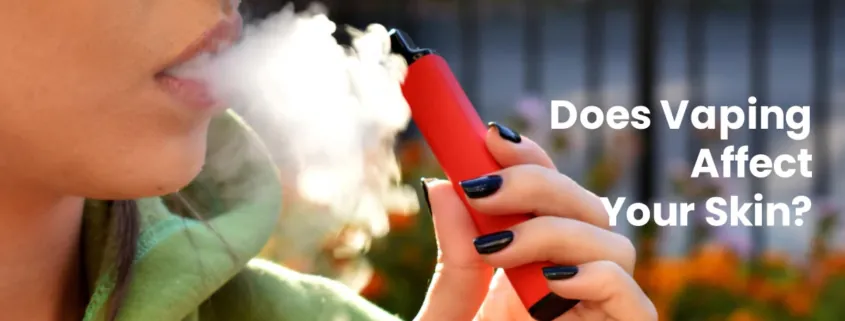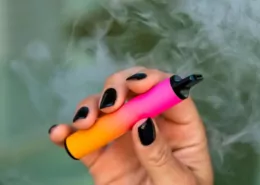Does Vaping Affect Your Skin? In-Depth Guide & Skincare Tips
As vaping has become an increasingly popular alternative to smoking, many people have been drawn to the allure of swirling vapor clouds and the promise of a less harmful nicotine delivery method. However, beneath the surface of this seemingly harmless habit lies a potential threat to your skin’s health and appearance. In this comprehensive guide, we’ll explore the hidden effects of vaping on your skin, from the deceptive charm of nicotine to the myriad of chemicals lurking in your vape juice. We’ll also discuss whether quitting vaping is the best solution for your skin, or if there are ways to mitigate the damage and improve your skin’s condition.
Understanding the Basics of Vaping
Before we dive into the impact of vaping on your skin, it’s essential to understand what vaping entails. Vaping is the act of inhaling and exhaling vapor produced by an electronic cigarette (e-cigarette) or similar device. While it may seem like a safer choice compared to smoking, it’s important to recognize that vaping still exposes your skin to a variety of substances, including:
- Nicotine: The addictive component that keeps many ex-smokers hooked on vaping, especially those who require high nicotine content to combat cravings. Nicotine can be synthetically produced or extracted from tobacco leaves, and vape juices offer a wide range of nicotine strengths, from 0mg to 50mg or even higher for DIY e-juice enthusiasts.
- Propylene Glycol (PG): A clear, colorless liquid commonly used as a base in e-liquids, PG is known for providing a “throat hit” that mimics the sensation of smoking tobacco. It also acts as a carrier for flavorings, helping to evenly distribute taste throughout the vape juice. PG is thinner than vegetable glycerin, reducing the likelihood of build-up in the vaping device.
- Vegetable Glycerin (VG): A thicker, sweeter liquid compared to PG, VG is used in e-liquids to produce denser vapor clouds. It’s known for its smoothness, which can reduce the throat hit when inhaled. E-liquids with a higher VG content are popular among users who enjoy performing vape tricks or those seeking a milder throat sensation.
- Flavorings: The wide array of flavors available in e-liquids is what makes vaping a diverse and customizable experience. From traditional tobacco and menthol to fruit, dessert, beverage, and exotic combinations, these food-grade flavorings create a pleasant taste and aroma when vaping.
- Water: Small amounts of distilled water may be added to e-liquids to adjust viscosity or enhance certain flavors. Alcohol can also be included to contribute to the throat hit.
- Battery and Heating Coil: The battery powers the heating coil, which vaporizes the e-liquid when activated. The electrical current flows from the battery to the coil, causing it to heat up and transform the e-liquid soaked into the wicking material into vapor.
The Impact of Vaping on Skin Health
Dehydration and Dryness
Nicotine, a key component in most vape juices, has diuretic properties that can increase the frequency of urination, leading to dehydration. When the body is dehydrated, the skin becomes dry and flaky, accentuating fine lines and wrinkles and giving the skin a rough, uneven texture.
Impaired Blood Flow and Nutrient Delivery
Vaping, particularly due to nicotine, constricts blood vessels, reducing blood flow to the skin. Blood carries vital nutrients and oxygen to keep the skin healthy, and when circulation is compromised, the skin may appear dull and become more susceptible to damage, much like a plant wilting from lack of water.
Irritation and Weakened Skin Barrier
Ingredients in vape juice, such as propylene glycol and vegetable glycerin, can draw moisture from the skin, causing dryness and irritation similar to chapped lips. This dryness can also disrupt the skin’s natural protective barrier, making it more vulnerable to environmental irritants.
Accelerated Aging and Texture Changes
The reduced blood flow and increased dryness associated with vaping can accelerate the aging process, leading to the premature appearance of wrinkles, fine lines, and age spots. Additionally, the dryness caused by vaping can result in flaky, rough skin texture, resembling sandpaper rather than a smooth, supple surface.
Exacerbation of Skin Conditions and Impaired Healing
For individuals with pre-existing skin conditions such as acne or eczema, vaping can exacerbate symptoms by irritating the skin and interfering with its natural healing processes. When the skin’s ability to heal is compromised, even minor cuts or scratches may take longer to resolve and have a higher risk of leaving scars.
Heat Sensitivity and Physical Injuries
Vaping devices can reach high temperatures, which can cause redness and irritation on the skin, particularly where the device is held or where the vapor makes contact with the face. Additionally, the chemicals in the vapor can increase the skin’s sensitivity to external factors like sunlight or cold weather. While rare, e-cigarette explosions or burns can also cause significant physical damage to the skin.

13 Skin Care Tips for Minimizing Vaping Side Effects
P
Stay Hydrated: Combat the drying effects of vaping by drinking plenty of water to keep your body and skin well-hydrated. I make sure to carry a reusable water bottle with me at all times and aim to drink at least 2 liters of water per day.
Moisturize Regularly: Apply a high-quality moisturizer suitable for your skin type after vaping to replenish lost moisture and strengthen the skin’s protective barrier. I opt for a rich, fragrance-free cream that contains hyaluronic acid and ceramides to lock in hydration.
Use Antioxidant-Rich Skincare: Incorporate products containing antioxidants like vitamins C and E into your skincare routine to help fight oxidative stress caused by vaping. I’ve found that using a vitamin C serum in the morning and a nourishing vitamin E oil at night has helped improve my skin’s resilience.
Eat a Nutritious Diet: Consume foods rich in antioxidants and omega-3 fatty acids, such as berries and fatty fish, to support overall skin health. I try to include a variety of colorful fruits and vegetables in my meals and snack on nuts and seeds to provide my skin with essential nutrients.
Practice Sun Protection: Apply a broad-spectrum sunscreen with an SPF of 30 or higher daily to protect your skin from UV damage, which can be exacerbated by vaping. I never leave the house without applying a lightweight, non-greasy sunscreen to my face, neck, and hands.
Choose Gentle Products: Opt for skincare products that are gentle and free from irritants, as vaping can make your skin more sensitive. I avoid products with harsh acids, alcohol, or fragrances and instead look for soothing ingredients like aloe vera and chamomile.
Exfoliate Carefully: Gently exfoliate to remove dead skin cells without over-irritating your skin, which is especially important for vapers. I use a soft, microfiber cloth with a mild, creamy cleanser to avoid excessive scrubbing and maintain my skin’s integrity.
Consult a Dermatologist: Seek personalized advice from a skincare professional, particularly for vaping-related skin concerns. I scheduled an appointment with a dermatologist when I noticed my skin was not improving despite my best efforts, and they provided targeted recommendations based on my specific needs.
Reduce Vaping Frequency: Consider cutting back on how often you vape and observe improvements in your skin’s condition to better understand the impact of vaping on your skin. I started by gradually reducing the number of times I vaped each day and noticed a positive change in my skin’s texture and hydration levels.
Be Mindful of Your Vaping Environment: Pay attention to where you vape, as certain environments, such as outdoors, may lead to fewer skin reactions due to better ventilation. I try to vape in open spaces or near windows to minimize the concentration of vapor around my face.
Practice Moderation in Social Vaping: If you vape in social settings, try to limit the frequency of these occasions to balance social vaping with your skin’s health needs. I set boundaries for myself, such as only vaping once during a social gathering, to reduce the cumulative impact on my skin.
Vape at Lower Temperatures: Higher temperatures can produce more harmful chemicals and cause skin redness. Use discreet disposable vapes or adjust your vape kit to a lower setting to reduce cool vapor production. I’ve found that vaping at lower wattages not only produces less vapor but also feels gentler on my skin.
Experiment with Nicotine-Free Vaping: Since nicotine is a primary culprit in vaping’s effects on the skin, consider trying nicotine-free vaping options, such as zero-nicotine disposable vapes or non-nicotine vape juice. I’ve gradually transitioned to using lower nicotine concentrations and have noticed improvements in my skin’s hydration and overall appearance.
Other Potential Side Effects of Vaping
While the focus of this article is on the impact of vaping on skin health, it’s essential to be aware of other potential side effects associated with vaping, including:
- A Persistent Cough: Inhaling vapor can lead to a dry, hacking cough as the respiratory system reacts to the foreign particles. I developed a chronic cough after vaping for several months, which subsided once I reduced my vaping frequency and switched to a higher VG e-liquid.
- Jitters: As a stimulant, nicotine can cause feelings of jitteriness or restlessness, similar to consuming excessive amounts of caffeine. I often felt a bit shaky and on edge after vaping, especially when using higher nicotine concentrations.
- Dry Mouth or Eyes: Vaping can cause dryness in the mucous membranes, resulting in a dry mouth or dry, irritated eyes. I experienced a persistent dry mouth and found myself reaching for eye drops more often when I was vaping regularly.
- Headaches and Nausea: The body’s reaction to nicotine and other chemicals in vape juice can sometimes trigger headaches and nausea, particularly in new users or those who vape heavily. I would occasionally get a dull headache and feel slightly nauseous after extended vaping sessions.
- Mouth and Throat Irritation: The chemicals in the vapor can irritate the delicate tissues in the mouth and throat, causing discomfort and inflammation. I noticed a scratchy sensation in my throat and occasional mouth sores when I first started vaping.
- Vomiting: In some cases, especially with high nicotine levels or excessive vaping, users may experience nausea and vomiting. I witnessed a friend who chain-vaped high-nicotine e-liquids become ill and vomit after a prolonged session.

Ecigator Sticky Prefilled Pod Kit
The Ecigator Sticky Prefiiled Replaceable Vape Pod Kit is new kind of vape kit which the prefilled disposable pod can be changed.
That means you don’t need to throw away the whole kit but just change another pod. Also you can change the pods to taste different flavors.
Strategies for Avoiding Vaping Side Effects
To minimize the risk of experiencing adverse side effects from vaping, consider implementing the following strategies:
- Stay Hydrated: Increase your water intake to counteract the dehydrating effects of vaping and maintain hydration in your mouth, eyes, and skin. I keep a large water bottle at my desk and take frequent sips throughout the day.
- Monitor Nicotine Intake: Opt for lower nicotine e-liquids or nicotine-free options to reduce the likelihood of jitters, headaches, and nausea. Gradually decreasing nicotine levels can also help your body adjust without experiencing severe withdrawal symptoms. I started with 6mg nicotine e-liquids and slowly worked my way down to 3mg, and then 0mg, to minimize side effects.
- Use Quality Vaping Products: Invest in high-quality vaping devices and e-liquids from reputable sources to avoid exposure to potentially harmful chemicals that can irritate the mouth, throat, and respiratory system. I research brands thoroughly and read reviews from experienced vapers before making a purchase.
- Vape Moderately: Limit the frequency and duration of your vaping sessions to reduce exposure to irritants and decrease the risk of coughing, throat irritation, and other respiratory issues. I set a personal limit of no more than 10 puffs per hour and take breaks between vaping sessions.
- Practice Good Oral Hygiene: Maintain good oral hygiene by brushing your teeth twice daily, using mouthwash, and staying hydrated to keep your mouth’s mucous membranes moist and prevent mouth and throat irritation. I carry a small bottle of alcohol-free mouthwash with me and use it after vaping to freshen my breath and soothe my throat.
- Take Breaks and Listen to Your Body: If you experience adverse effects like nausea or vomiting, take it as a sign to reduce your vaping frequency or stop altogether. Listening to your body’s signals can help you avoid pushing your limits. I once vaped excessively during a stressful period and ended up with a severe headache and nausea, which prompted me to take a break and reassess my vaping habits.
- Consider Vaping Alternatives: If you’re vaping to quit smoking but are concerned about side effects, explore other nicotine replacement therapies or cessation methods that might offer a healthier alternative without the associated risks. I have friends who have successfully quit smoking using nicotine gum or patches, which may be worth considering.
- Consult Healthcare Professionals: If side effects persist or worsen, it may be time to consult a healthcare provider for personalized advice and alternative strategies for managing nicotine dependence or cessation. I spoke with my doctor about my vaping-related concerns, and they provided valuable guidance on how to minimize risks and work towards quitting.

Ecigator Sticky Open Pod Kit
The Sticky Open Pod Kit is a contemporary vaping device that combines functionality with fashion. This kit is designed with a box-style form factor, offering a compact and stylish appearance that’s ideal for vaping enthusiasts on the move.
At the heart of this kit is a Refillable Open Pod System, with a capacity of 2ml, perfect for accommodating a variety of e-liquids. The pod is equipped with a high-quality Mesh Coil that not only ensures a rich and flavorful vaping experience but also boasts durability for up to 8 Refills.
Examining the Potential Health Benefits of Vaping
While the primary focus of this article is on the negative impact of vaping on skin health, it’s important to acknowledge that some users report experiencing certain benefits from vaping, including:
Boosts in Focus
Nicotine, a stimulant found in most vaping liquids, can stimulate the release of neurotransmitters like dopamine and norepinephrine, temporarily enhancing attention and concentration. The act of vaping also engages the senses and can momentarily divert attention, which might help some users feel more focused on the task at hand, especially in distracting environments. I find that taking a short vape break can help me refocus when I’m feeling mentally fatigued or distracted.
Alleviating Boredom
The physical activity involved in vaping (handling the device, inhaling, exhaling) can occupy the hands and mind, providing a simple activity that can help pass the time and counteract feelings of boredom. The wide range of devices, flavors, and nicotine strengths available can also make vaping an engaging hobby for some, offering experimentation and personalization that can be appealing when seeking distractions. I enjoy trying out new e-liquid flavors and experimenting with different vaping techniques when I’m feeling bored or restless.
Stress Relief
For nicotine users, the substance can temporarily reduce stress and anxiety due to its psychoactive effects. The act of taking a break to vape can also serve as a short mental respite from stressful situations. Additionally, the routine associated with vaping can provide a sense of comfort and normalcy that helps some individuals manage stress, acting as a coping mechanism in moments of anxiety or discomfort. I find that stepping away for a quick vape break can help me feel more relaxed and centered during high-pressure situations at work.
Potential for Smoking Cessation
E-cigarettes have been promoted as a less harmful alternative to traditional cigarettes, offering adult users a variety of flavors and the ability to choose different nicotine strengths. Vaping doesn’t produce the same unpleasant odor as regular cigarettes and may even be more cost-effective in the long run. A US study involving 161,054 participants found that smokers who switched to using e-cigarettes had a higher rate of quitting smoking compared to those who didn’t use e-cigarettes (5.6% versus 4.5%). I have personally witnessed several friends successfully transition from smoking to vaping, with some eventually quitting nicotine altogether.

Comparing the Impact of Vaping and Smoking on Skin Health
While both vaping and smoking can have detrimental effects on skin health, it’s worth examining the differences between the two. Cigarette smoke contains over 7,000 harmful chemicals that can accelerate skin aging, increase wrinkle formation, and impair the skin’s healing process. Vaping, while not entirely harmless, may be less damaging to the skin since it doesn’t involve the combustion of tobacco.
However, vaping still often contains nicotine, which can impair blood flow to the skin, much like cigarettes. The key difference is that vaping allows users to choose nicotine-free options, potentially reducing the impact on skin health. While neither vaping nor smoking is ideal for maintaining healthy skin, vaping could be considered somewhat less harmful in comparison to smoking. I noticed a significant improvement in my skin’s texture and radiance when I switched from smoking to vaping, and even more so when I began using nicotine-free e-liquids.
Frequently Asked Questions
Yes, vaping can contribute to skin problems. Ingredients in vape juice, such as nicotine and propylene glycol, can reduce blood flow and dehydrate the skin, potentially causing issues like dryness, irritation, and worsening of existing skin conditions like acne or eczema. I experienced an increase in skin sensitivity and flakiness when I first started vaping, which improved once I adjusted my vaping habits and focused on hydration.
Yes, quitting vaping can benefit your skin. Without exposure to the dehydrating effects of vaping and the vasoconstrictive properties of nicotine, your skin can receive better blood flow and hydration, potentially improving its overall appearance and health. I noticed a significant improvement in my skin’s clarity and elasticity within a few weeks of cutting back on vaping and eventually quitting.
Yes, vaping can contribute to skin aging. Nicotine in vape juice can impair blood flow, reducing oxygen and nutrient delivery to the skin. This can accelerate the aging process, causing premature wrinkles and a loss of skin elasticity. I started to notice fine lines and a loss of firmness in my skin after several months of regular vaping, which was a wake-up call for me to reassess my habits.
No, vaping is not considered beneficial for skin health. While it might be less harmful than traditional smoking due to the absence of tar and other combustion by-products, the nicotine and other chemicals in vape juice can still negatively impact skin health. I have never experienced any positive effects on my skin from vaping, only varying degrees of damage and irritation.
Yes, vaping can dehydrate you. Ingredients like propylene glycol and vegetable glycerin found in e-liquids can draw moisture from your body, leading to dehydration and dry mouth, dry skin, and irritation. I always make sure to drink extra water when I’m vaping to counteract the dehydrating effects and keep my skin and mucous membranes hydrated.
No, vaping itself is not directly linked to causing facial fat gain. Weight changes are more closely related to overall lifestyle, diet, and genetic factors. However, quitting smoking and starting vaping can sometimes lead to changes in appetite and metabolism, indirectly affecting weight. I experienced a slight increase in appetite when I first switched from smoking to vaping, but it leveled out over time as my body adjusted.
Yes, vaping can contribute to the development of wrinkles. The nicotine found in vape liquids can constrict blood vessels, leading to reduced blood flow to the skin. This can impact the production of collagen and elastin, which are essential for maintaining skin firmness. When these proteins are diminished, the skin may display early signs of aging, such as wrinkles and fine lines, particularly around the mouth. I started to notice more pronounced laugh lines and crow’s feet after a year of regular vaping, which prompted me to cut back and focus on more skin-friendly habits.
Conclusion
In conclusion, the impact of vaping on skin health is a complex and often overlooked issue that deserves greater attention and understanding. While vaping is frequently promoted as a safer alternative to smoking, it is essential to recognize that it still poses significant risks to the health and appearance of your skin. From the dehydrating effects of propylene glycol and vegetable glycerin to the vasoconstrictive properties of nicotine, the chemicals found in vape juice can contribute to a range of skin concerns, including dryness, irritation, accelerated aging, and impaired healing.
As someone who has personally experienced the negative effects of vaping on my skin, I can attest to the importance of making informed decisions about your vaping habits and prioritizing the health of your skin. By implementing the skincare tips and strategies outlined in this guide, such as staying hydrated, using moisturizing and antioxidant-rich products, and being mindful of your vaping frequency and environment, you can help mitigate the damage caused by vaping and maintain healthier, more radiant skin.
However, it is crucial to remember that the best way to protect your skin from the harmful effects of vaping is to quit altogether. While this may be a challenging journey, the benefits to your skin, as well as your overall health, are well worth the effort. By exploring alternative methods for managing nicotine cravings, such as nicotine replacement therapies or counseling, and seeking support from healthcare professionals and loved ones, you can take steps towards a vape-free lifestyle and prioritize the long-term health and beauty of your skin.
Ultimately, the decision to vape or not to vape is a personal one that should be made with a full understanding of the potential risks and benefits. By staying informed, listening to your body, and making choices that align with your health goals and values, you can take control of your skin’s well-being and embrace a more vibrant, confident version of yourself.
- North Carolina’s Vape Product Ban Takes Effect on July 1st - July 3, 2025
- Nepal Court Lifts E-Cigarette Import & Sales Ban - July 3, 2025
- The Data That Proves the Australian Vape Ban is A Failure - July 3, 2025








